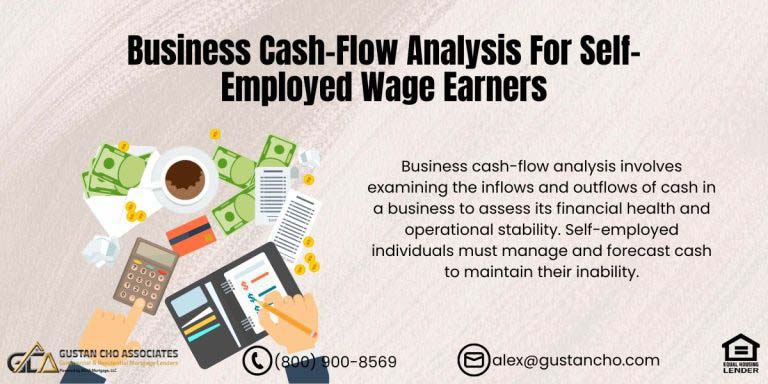This guide will cover the top cities in the United States in which to invest in real estate. It is no secret that the economy is not what it used to be. Things have become more expensive, salaries are the same, and you get the feeling of being under a financial burden all the time. What you could pay for a $100 around 10 years ago is not what you can buy today. This is why people have begun to turn to investments to guarantee that their futures will have a steady plan and that they will sleep better at night. Having a personal investment, your day job aside, is the only way to shield yourself from the woes of whatever is going on in a fluctuating economy. But what is the best investment in the United States right now? The answer is real estate. This article will discuss the top cities in the United States where investors can invest in real estate.
Top Cities in the United States to Invest in Real Estate in 2025
Real estate has long been a go-to way for everyday people to grow their money, thanks to steady rental checks, rising property values, and the fact that bricks and mortar spread risk across multiple assets. With 2025 just around the corner, several American metro areas are pulling ahead because they combine healthy employment, rising resident numbers, reasonable prices, and strong demand for rentals. This clear, easy-to-read guide points out the cities you may want to watch next year, and it leans on the latest numbers from Realtor.com, Redfin, and real-estate pros. Whether adding to your portfolio or stepping into your first house flip, these spots could give you solid returns from rent, appreciation, and lasting market stability.
Looking to Invest in Real Estate? Start With the Right Market
Explore the top U.S. cities with high ROI potential, population growth, and strong rental demand.
Factors to Consider When Choosing a City for Real Estate Investment
Before we rank the cities, here are the big things experts track to spot a winning market:
- Population Growth: More people moving in means more homes are needed, increasing rent and sale prices.
- Job Market Strength: A mix of tech, health care, and finance jobs keeps the local economy steady and attracts new residents.
- Rental Yield: Look for postal returns-rent income versus how much the property costs, and you’ll see how quickly your money works for you.
- Home Price Growth: Areas where property values steadily rise help owners build wealth over time.
- Affordability: Cities with home prices below the U.S. median let more people jump into investing sooner.
- Economic Mix: Regions that host many jobs rebound faster when the economy slows.
- Vacancy Rates: A 5 to 10 percent vacancy rate shows that rental demand roughly matches the number of available units.
Considering these signs, experts say five U.S. cities look best for real estate buyers in 2025.
Top Cities in the United States to Invest in Real Estate in 2025
Nashville, TN: Why Invest in Nashville?
Still dubbed “Music City,” Nashville will remain a hot market in 2025 thanks to its lively culture, strong jobs, and fast population growth. A mix of music, healthcare, and tech work draws young newcomers and families, keeping both rentals and for-sale homes in high demand.
- Population Growth: About 3 to 4 percent more people move to Nashville yearly, many coming from pricier states such as California and New York.
- Job Market: Employers like Vanderbilt University, HCA Healthcare, and a new Amazon hub supply many stable, well-paid positions.
- Rental Market: Short-term rentals, like Airbnb, are booming thanks to steady tourist traffic.
- The median monthly rent for a two-bedroom sits around $1,800, giving landlords a 5-6 percent yield.
- Home Price Trends: The typical house sells for about $475,000, marking a 6 percent annual increase, and experts predict another 3-4 percent lift in 2025.
- Investment Tip: Look to suburban spots like Franklin or the bustling East Nashville corridor.
- Both offer strong tenant demand and good odds for value growth.
- Challenges: Climbing property taxes and fierce competition in hot pockets mean investors must act quickly to secure a deal.
Tampa, FL
Why Invest in Tampa?
Tampa consistently ranks near the top of real-estate watch lists because its prices are reasonable, new residents keep arriving, and rentals stay strong. No state income tax and pro-business rules lure investors and people looking to relocate.
- Population Growth: The city added 4.6 percent more residents over the last two years, with retirees, remote workers, and early-career professionals leading the wave.
- Job Market: Major firms like Citigroup and USAA, plus growing finance, health care, and tech sectors, give the local economy a solid footing.
- Rental Market: The median rent now stands at $1,900.
- If investors hold for five years, they can expect an impressive 42.3 percent return.
- Home Price Trends: The average house now costs about $377,792 and has returned almost 60 percent over the past decade, ranking it among the nation’s biggest gainers.
- Investment Tip: Look for single-family rentals in Hyde Park or Seminole Heights if you want steady cash flow and room to grow.
- Challenges: Because the region is still in hurricane alley, you’ll need solid, sometimes pricey, insurance to protect your investment.
Charlotte, NC
Why Invest in Charlotte?
Charlotte is carving out a name as the South’s next finance-and-tech powerhouse, and that momentum should carry into 2025. Offering newcomers affordable homes, rising pay, and thousands of job openings keeps both renters and buyers flooding in.
- Population Growth: Every year, the city gains about 2.5 percent more residents who move in to escape pricier, crowded metro areas.
- Job Market: With headquarters for Bank of America and Truist and a growing cluster of tech firms such as Honeywell, the area offers many high-paying gigs that boost housing appetite.
- Rental Market: Average monthly rent now hits roughly $1,700.
- However, demand for single-family homes and larger complexes remains fierce, usually giving landlords a 5-to-6 percent yield.
- Home Price Trends: The typical listing costs close to $400,000, and analysts expect a steady 4-to-5 percent rise through 2025.
- Investment Tip: Seek small multifamily buildings in NoDa or the South End.
- Those neighborhoods are maturing fast, and occupancy rates are almost always high.
- Challenges: Because everyone sees the same opportunity, competition in sought-after zip codes can push prices up quicker than planned.
Boise, ID
Why Invest in Boise?
Boise has quickly become a favorite roaring market thanks to low living costs, strong job growth, and an influx of remote workers. Its booming tech scene and breathtaking outdoor options attract newcomers like magnets.
- Population Growth: The city has gained roughly 3% more people yearly, with many moving from California and other Western states.
- Job Market: Companies like Micron Technology and a lively startup wave create plenty of work.
- Rental Market: The median rent is below $1,600; investors enjoy 5-6% returns and few empty units.
- Home Price Trends: The typical home now sells for $495,000, a big jump from $397,000 in 2020, and experts expect 6.8% more growth by 2025.
- Investment Tip: To generate steady cash flow, look for single-family rentals or small duplexes in sought-after spots like the North End.
- Challenges: Soaring prices may push some buyers out of the market.
Las Vegas, NV
Why Invest in Las Vegas?
Las Vegas’s mixed economy, lack of state income tax, and year-round tourism make it high on investors’ watch lists for 2025.
- Population Growth: The city is growing fast, drawn in by budget-friendly homes and fresh job openings.
- Why Invest in Las Vegas? Beyond its tourist appeal, Las Vegas is diversifying quickly.
- Steady growth in healthcare, tech, and construction keeps unemployment low and attracts new residents all year.
- Population Growth: The city adds roughly 50,000 new people each year, a solid 2.4 percent increase that shows no sign of slowing.
- Job Market: Travel and conventions still drive many jobs, but hospitals, data centers, and building projects now share the spotlight, pushing wages upward.
- Rental Market: Rents rose 8 percent in the last twelve months, giving landlords an average yield of 5.2 percent.
- With only one foreclosure in every 10,000 homes, confidence stays high.
- Home Price Trends: The typical house sits around $445,000, a gain of 6.3 percent since last year.
- Experts expect similar yearly bumps shortly.
- Investment Tip: Properties near the Strip can shine as short-term rentals.
- At the same time, single-family homes in growing suburbs like Henderson meet steady long-term demand.
- Challenges: Past peaks and valleys remind investors to research neighborhoods, check local regulations, and plan for seasonal slowdowns before purchasing.
Top U.S. Cities for Real Estate Investors—Ranked and Explained
Whether you’re a first-time investor or seasoned pro, know where to buy for long-term success.
Raleigh, NC
Why Invest in Raleigh?
Nestled in North Carolina’s famed Research Triangle, Raleigh offers a well-educated workforce, leading universities, and a booming rental scene that attracts students and young professionals.
- Population Growth: Strong tech and research job creation fuels an annual population rise of about 2 percent.
- Job Market: Duke, NC State, and dozens of ambitious startups pull in high-salary talent nationwide.
- Rental Market: Demand around the campuses stays fierce, pushing median monthly rents to $1,500 and delivering rental yields near 6 percent.
- Home Price Trends: The median house costs roughly $450,000 today, and analysts foresee 4 to 5 percent price appreciation through 2025.
- Investment Tip: Small multifamily buildings or student-focused units near NC State provide landlords with steady rent even during summer break.
- Challenges: Aggressive institutional buyers lengthen bidding wars, so investors should move quickly and be prepared to pay slightly above budget thresholds.
Phoenix, AZ
Why Invest in Phoenix?
Phoenix grew with new residents and firms, and with costs that still look reasonable next to coastal towns, it stays on every investor’s list.
- Population Growth: The country’s fifth-largest city pulls movers from pricey areas such as Southern California.
- Job Market: Intel, Amazon, and American Express keep adding jobs, especially in tech, finance, and logistics.
- Rental Market: Single-family renters flood in, pushing median rent to about $1,800, yielding around 5 to 6 percent.
- Home Price Trends: The statewide median sits near 450,000 today, and analysts expect 4 percent growth through 2025.
- Investment Tip: Scout suburbs such as Scottsdale, Tempe, or Maricopa for condos, single-family homes, or small multifamily assets.
- Challenges: Because demand peaked in 2021, appreciation may slow in some neighborhoods while the market finds balance.
Austin, TX
Why Invest in Austin?
Austin’s grab for eyeballs has dialed back since the pandemic boom, yet its tech edge, zero state income tax, and fast migration still charm buyers.
- Population Growth: Over the past decade, people have poured in, increasing Austin’s head count by roughly 30 percent.
- Job Market: Apple, Google, and Tesla’s new factories create thousands of yearly high-paying openings.
- Rental Market: Median rent hovers near 1,900. Demand stays strong, even though price gains have eased this year.
Austin, TX
Why Invest in Austin?
Austin’s blend of tech jobs, live music, and decent weather keeps demand high, so buying here now could pay off later.
- Population Growth: The city usually adds about 3.1 percent of new residents yearly, thanks mostly to graduates and remote workers.
- Job Market: Big employers range from Dell and Apple to hospitals and universities, giving the economy broad cushions.
- Rental Market: With rents near $2,000 and yields around 4 percent, landlords still see decent returns because new towers keep rising.
- Home Price Trends: The typical house costs $516,000, a 3.3 percent yearly gain, and analysts expect growth to slow but stay positive.
- Investment Tip: Look in budget-friendly suburbs like Round Rock if you need cheaper buy-in and stronger rent.
- Challenges: Sky-high prices plus strict zoning rules still squeeze supply and push some first-time buyers off the ladder.
Columbus, OH
Why Invest in Columbus?
Friendly prices, steady jobs, and many students make Columbus the Midwest’s favorite new rental hotspot for 2025.
- Population Growth: Growth is about 1.5 to 2 percent yearly as young talent and college crowds continue to move in.
- Job Market: A mix of education (Ohio State), healthcare, and finance jobs gives residents many work options and stability.
- Rental Market: Median rent near $1,400 lets landlords grab 6 to 7 percent yields, especially because homes remain budget-friendly.
- Home Price Trends: The average house is priced around $250,000 and should climb 4 to 5 percent yearly.
- Investment Tip: Short North or Clintonville are hot zones for vacancies, so focus there when hunting rental properties.
- Challenges: Some farther-out neighborhoods grow slowly, so study locations before purchasing.
San Antonio, TX
Why Invest in San Antonio?
Low home costs, a steady military base, and a booming healthcare scene make this a good choice for smart long-term investors.
Real Estate Snapshot for Joint Base San Antonio and Medical Centers Area
- Population Growth: The city gains around 2.7 percent fresh faces yearly, mostly from military rotations and job seekers.
- Job Market: Joint Base San Antonio and the South Texas Medical Center are nearby, so jobs stay steady year-round.
- Rental Market: The median rent is $1,760, driven by military families and newcomers eager to settle down.
- Home Price Trends: The typical home lists around $265,000 and is expected to grow by 3 to 4 percent annually.
- Investment Tip: Look for single-family houses near the bases or hospitals.
- They attract tenants quickly and stay occupied.
- Challenges: Price growth moves slightly slower than in Austin or Dallas.
Tips for Successful Real Estate Investing in 2025
- Conduct Thorough Research: Scout Zillow, Redfin, and your local MLS so you are knowledgeable about listings, sale prices, and rental returns.
- Work with Local Experts: Team up with a neighborhood agent or trusted wholesaler who can spot hidden deals and alert you first.
- Diversify Property Types: To match local demand, your portfolio can include single-family homes, duplexes, or even vacation rentals.
- Leverage Technology: Rental apps help you screen tenants, create leases, and track bills, saving time and cutting mistakes.
- Account for Risks: Keep property taxes, rising insurance (think hurricanes in Tampa), and shifting markets in your budget.
- Explore Financing Options: Chat with lenders about today’s rates, and consider 1031 swaps to kick the tax can down the road.
Where Should You Invest Next? Let the Data Decide
We’ll help you pinpoint the hottest real estate markets based on your budget and goals.
Why Invest in Real Estate in 2025?
Even with interest rates still on the high side, real estate is holding its ground in 2025, and single-family rental homes are standing out. Experts expect home values to rise about 3 to 4 percent yearly. At the same time, more renters flood the market because many first-time buyers can’t afford to purchase. Areas in the Southeast, much of Texas, and some Midwest cities are leading the pack thanks to lower prices, steady jobs, and people moving away from costly coastal hubs. When you zero in on these solid markets, you position yourself for steady rent checks today and profitable sales farther down the road.
Cities like Nashville, Tampa, Charlotte, Boise, Las Vegas, Raleigh, Phoenix, Austin, Columbus, and San Antonio are popping up on almost every investor’s short list for 2025 because they mix affordable entry costs with high population growth and strong rental demand.
Tapping into up-to-date data and teaming up with local realtors can help you spot the best deals faster and squeeze out bigger profits in these fast-moving neighborhoods. So you can start by looking into one or two of these cities, find a trusted real estate pro, and line up financing, because smart moves now can turn bricks and mortar into lasting wealth by the end of the year. Excited to dive into one of these hot markets? Head to Zillow or Redfin to browse current listings, or contact a friendly local agent who can point you to the best deals. Tell us your investment goals in the comments and share the city you plan to target for your next property!
Why Invest in Real Estate?
The real estate market is the best for you to invest your money in, and for good reason. The Top Cities in the United States To Invest In For Investors are key due to the importance of location when investing in real estate. After the financial crisis of 2008, property prices dropped drastically, and they have been struggling to make a comeback ever since. Some real estate values have dropped by half! Still, real estate is returning, and prices have begun to surge again. They’ve yet to regain their former glory, but now is the time if you are looking for the perfect investment. If you wait too long, the prices may be out of reach.
Top Cities in The United States To Invest In Real Estate For The Best Bang For The Buck
Real estate is also the safest option out there for your money. It does not have the risk factors associated with other markets like stocks, which are liable to plummet at any second, without any necessary precursors. Real estate, however, does not share that problem. The property value will only go up, and in a few years, it will be worth a lot more than what you got it for.
That is one of the benefits of real estate; you can tangibly see your money right before you, and it will only get more valuable with time. There’s also no external factors affecting the pricing of real estate, for the most part, unlike stocks and other markets. So, if you want to use the money you have saved in the United States, which is the best city to help you invest in real estate?

Miami, Florida, Is One Of The Top Cities in The United States To Invest In Real Estate
One city that deserves to be considered the hottest spot for investment in the US is Miami, as you can see from this post. The city has seen a lot of ups and downs when it comes to real estate prices, but it is now quickly on the rise to become one of the most popular spots for real estate investors, both in and out of the country.
The properties are great, the prices are reasonable, and the city is wonderful. It also helps that Miami has changed its image from the spring break party all night persona into a cultural and artistic hub, which draws even more foreigners.
Top Cities in The United States To Invest In Real Estate: Cleveland, Ohio
Like much of Ohio, Cleveland has a constantly growing employment rate, meaning most city people have steady, good jobs. Home values rise yearly, making it a perfect spot to buy the property. With the high rental yield and average high salaries in the city, it’s expected that you could pay off the property’s price by renting it for a few years.
Phoenix, Arizona, Is Among the Top Cities in the United States To Invest In Real Estate
Phoenix’s very high population growth rate, higher-than-average employment rate, and solid increase in property value make it an excellent spot for real estate investors.
Top Cities in The United States To Invest In Real Estate: Durham, North Carolina
Durham also has even higher population growth rates and employment rates than Phoenix, making it another good spot to invest in real estate.
Las Vegas, Nevada
Believe it or not, Las Vegas, Nevada, is one of the best spots in the country to invest in real estate. The city has the country’s third-highest overall employment growth rate, which makes sense, considering how popular this city is amongst tourists and punters for its many attractions and activities. Las Vegas also has very high yields on rentals, as the demand for property rental in busy spots is quite high, and you’ve got the big guys wanting to rent down there, so you’ll probably pay off that mortgage before you can say Nevada.
As we said earlier, it is now or never for the real estate market. Despite the numbers above and the high yields, real estate is still attainable and relatively affordable. Yet, with the growing demand and the market slowly but surely getting back on its feet, there is no telling where the road could take us and how much higher real estate could get. So, if you have some money saved up and are still hesitant about making that choice, do yourself a favor and invest in properties.
Want to Grow Your Portfolio? Start With the Best Markets
We’ve analyzed data on rents, price growth, and cap rates to bring you the top-performing U.S. markets.









